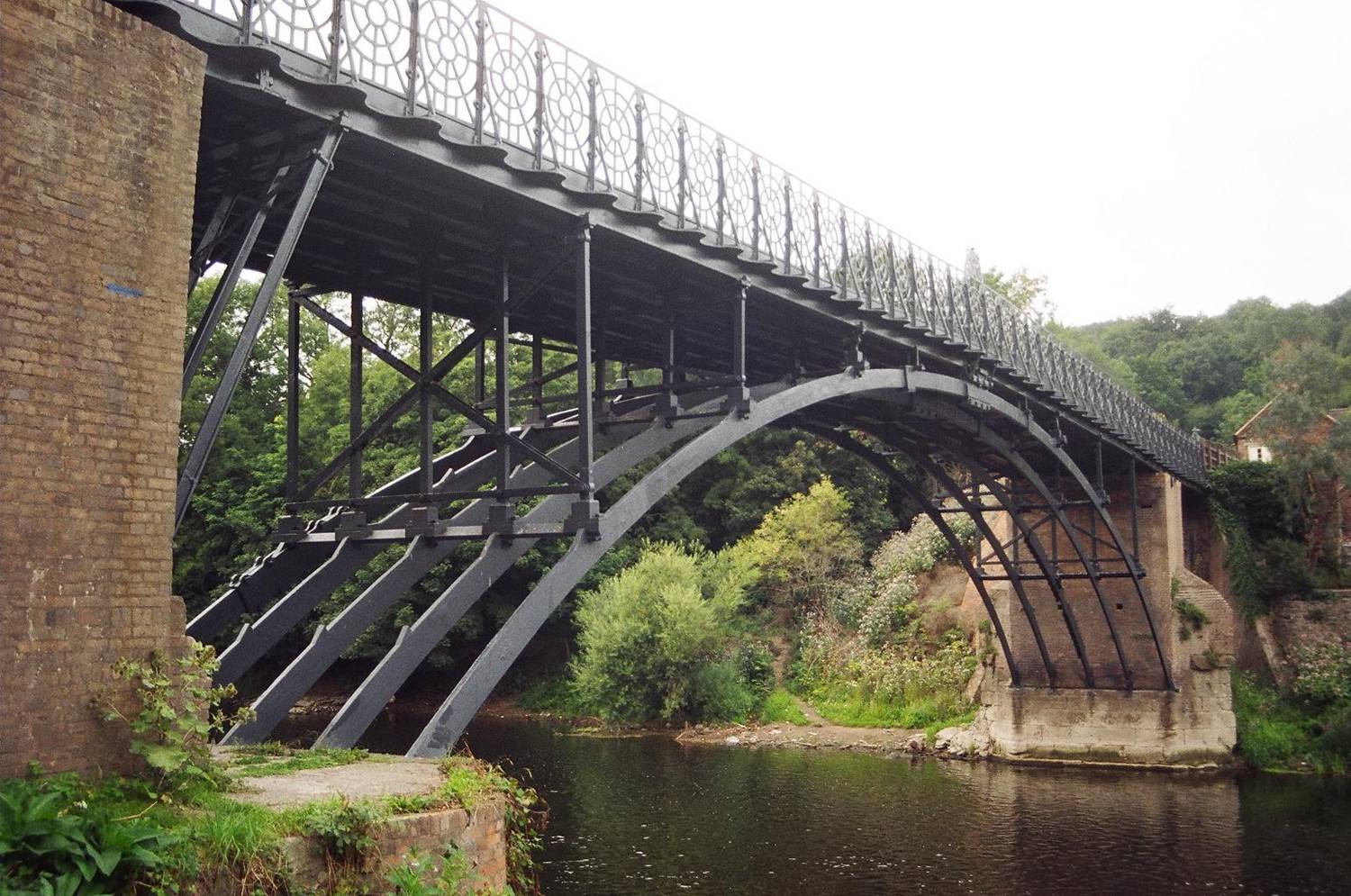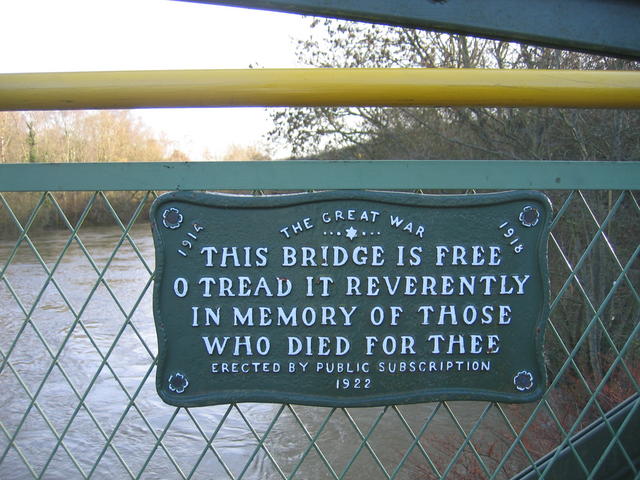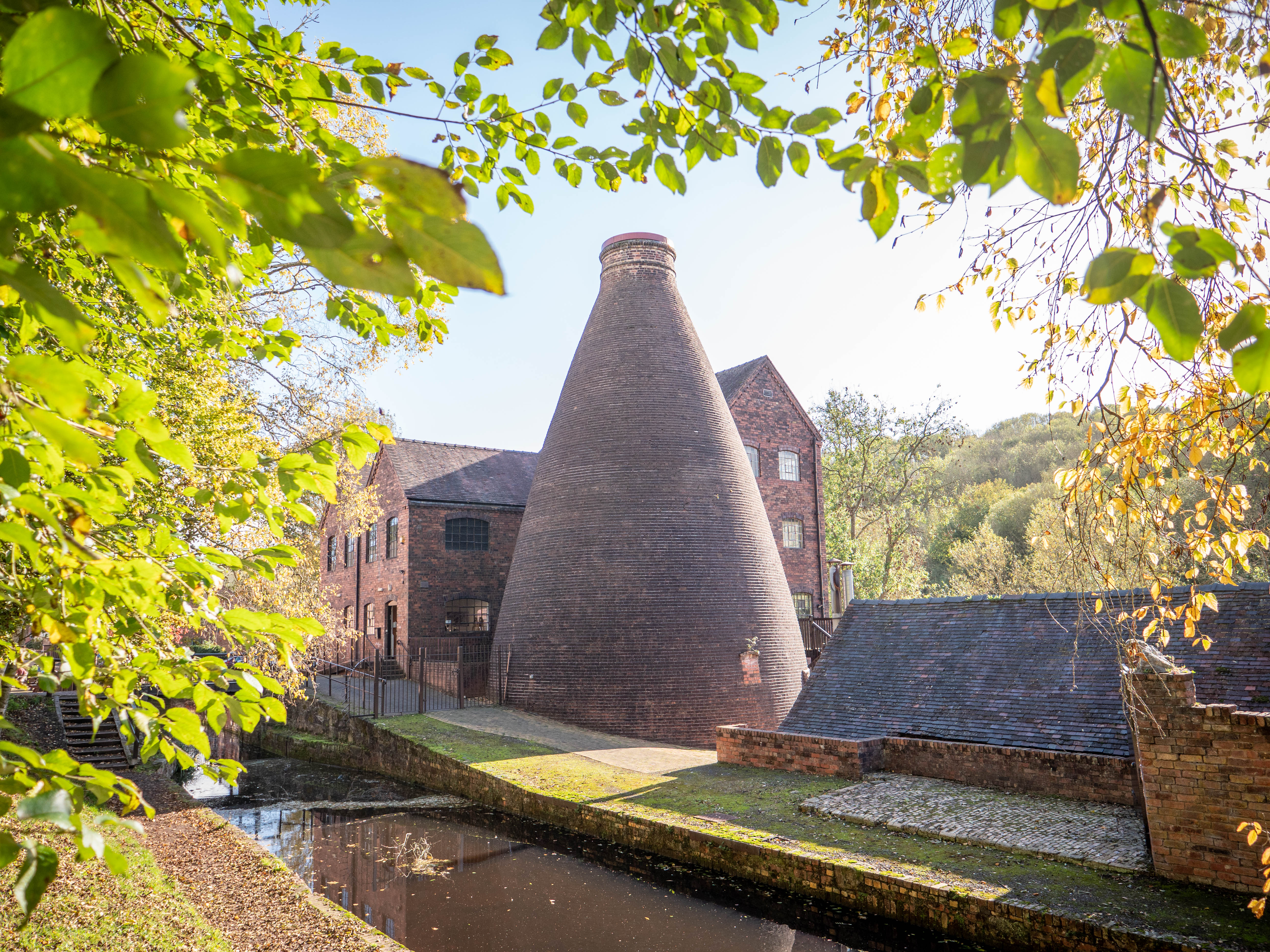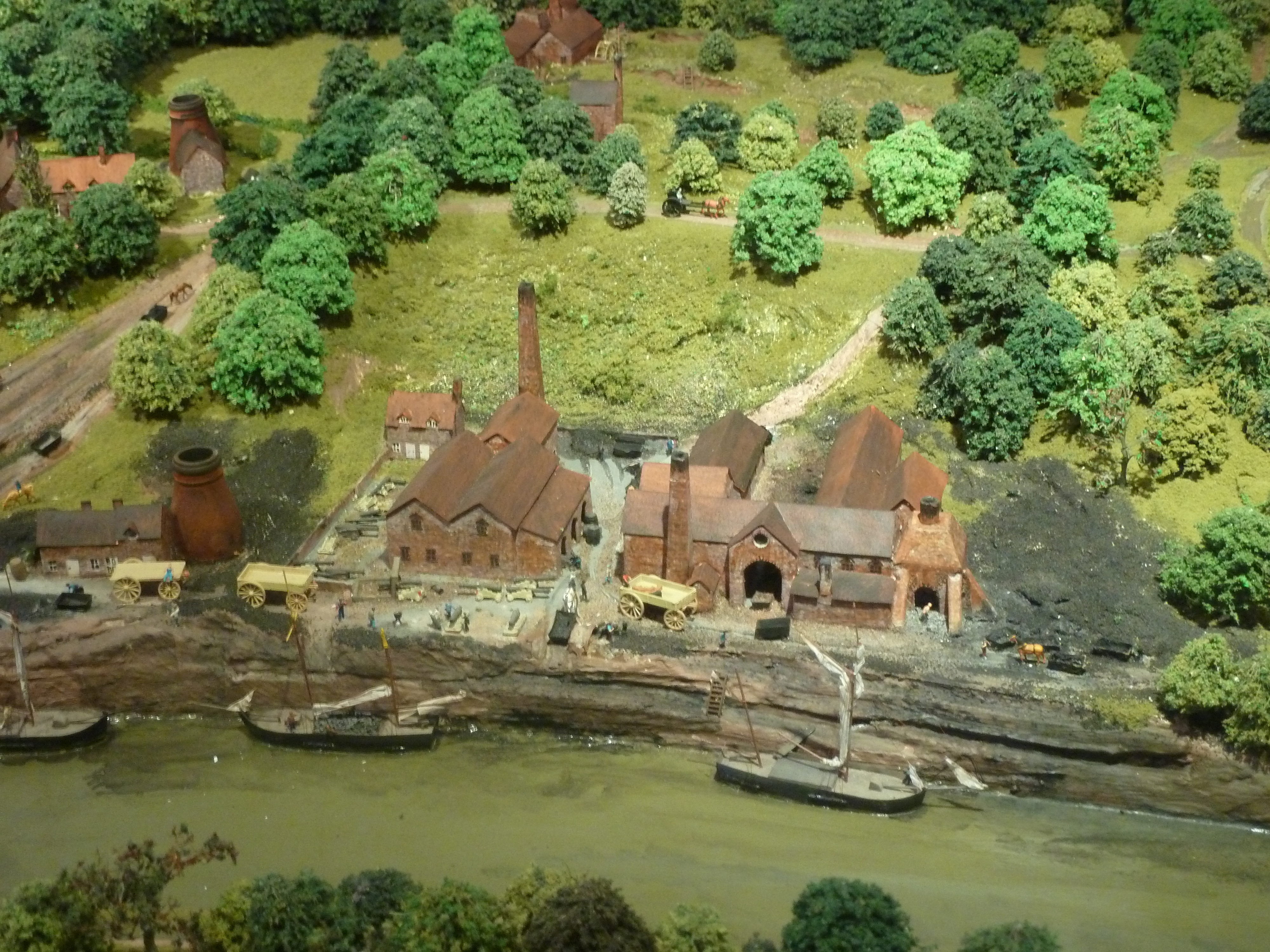|
Coalport
Coalport is a village in Shropshire, England. It is located on the River Severn in the Ironbridge Gorge, a mile downstream of Ironbridge. It lies predominantly on the north bank of the river; on the other side is Jackfield. The settlement was planned as a canal–river interchange and a complete "new town" by ironmaster William Reynolds, who between 1788 and 1796 built warehouses, workshops, factories and workers' accommodation in Coalport. He also directed the construction of the Shropshire Canal, linking the East Shropshire Coalfield with the River Severn — the terminus being Coalport Wharf between the Brewery Inn and Coalport Bridge. Coalport at this time was much larger than it is today. It forms part of the civil parish of the Gorge and is the southeastern corner of the borough of Telford and Wrekin. Cast iron bridge The Coalport Bridge of cast iron was built in 1818 and unlike its even more famous neighbour at Ironbridge, still takes vehicular traffic, albeit li ... [...More Info...] [...Related Items...] OR: [Wikipedia] [Google] [Baidu] |
Coalport Porcelain
Coalport, Shropshire, England was a centre of porcelain and pottery production between about 1795 ("inaccurately" claimed as 1750 by the company) and 1926, with the Coalport porcelain brand continuing to be used up to the present. The opening in 1792 of the Coalport Canal, which joins the River Severn at Coalport, had increased the attractiveness of the site, and from 1800 until a merger in 1814 there were two factories operating, one on each side of the canal, making rather similar wares which are now often difficult to tell apart. Both factories made mostly tablewares that had elaborate overglaze decoration, mostly with floral subjects. A further round of mergers in 1819 brought moulds and skilled staff from Nantgarw porcelain and Swansea porcelain to Coalbrookdale, which continued to thrive through the rest of the century. The Coalport factory was founded by John Rose in 1795; he continued to run it successfully until his death in 1841. The company often sold its wares as ... [...More Info...] [...Related Items...] OR: [Wikipedia] [Google] [Baidu] |
Preens Eddy
Preens Eddy is a settlement on the south bank of the River Severn, opposite Coalport. Its history lies at the heart of the industrial revolution. Location and remains of the settlement today Preens Eddy is a settlement on the south bank of the River Severn between the Woodbridge Inn, next to Coalport Bridge, and the settlement of The Tuckies on the eastern edge of Jackfield where the Memorial Footbridge crosses the Severn. During the mid-20th century a further settlement, The Werps, separated Preens Eddy from The Tuckies; The Werps will be considered as the western boundary of Preens Eddy, the River Severn its northern boundary, the Woodbridge Inn its eastern boundary and the track of the old Great Western Railway line its southern boundary. This means that the most notable landmark of Preens Eddy is the bridge over the Severn linking Broseley with Coalport, originally made of wood and hence called the "Wood Bridge", in contrast to its counterpart made of iron further upstrea ... [...More Info...] [...Related Items...] OR: [Wikipedia] [Google] [Baidu] |
Coalport Br1
Coalport is a village in Shropshire, England. It is located on the River Severn in the Ironbridge Gorge, a mile downstream of Ironbridge. It lies predominantly on the north bank of the river; on the other side is Jackfield. The settlement was planned as a canal–river interchange and a complete "new town" by ironmaster William Reynolds, who between 1788 and 1796 built warehouses, workshops, factories and workers' accommodation in Coalport. He also directed the construction of the Shropshire Canal, linking the East Shropshire Coalfield with the River Severn — the terminus being Coalport Wharf between the Brewery Inn and Coalport Bridge. Coalport at this time was much larger than it is today. It forms part of the civil parish of the Gorge and is the southeastern corner of the borough of Telford and Wrekin. Cast iron bridge The Coalport Bridge of cast iron was built in 1818 and unlike its even more famous neighbour at Ironbridge, still takes vehicular traffic, albeit limi ... [...More Info...] [...Related Items...] OR: [Wikipedia] [Google] [Baidu] |
Shropshire Canal
The Shropshire Canal was a tub boat canal built to supply coal, ore and limestone to the industrial region of east Shropshire, England, that adjoined the River Severn at Coalbrookdale. It ran from a junction with the Donnington Wood Canal ascending the 316 yard long Wrockwardine Wood inclined plane to its summit level, it made a junction with the older Ketley Canal and at Southall Bank the Coalbrookdale (Horsehay) branch went to Brierly Hill above Coalbrookdale; the main line descended via the 600 yard long Windmill Incline and the 350 yard long Hay Inclined Plane to Coalport on the River Severn. The short section of the Shropshire Canal from the base of the Hay Inclined Plane to its junction with the River Severn is sometimes referred to as the Coalport Canal. Construction of the canal was completed in 1792, and it operated successfully until the 1830s. The construction and operation of the Hay inclined plane was documented by two Prussian engineers who visited it in 1826 or 18 ... [...More Info...] [...Related Items...] OR: [Wikipedia] [Google] [Baidu] |
Coalport Bridge
Coalport Bridge is a cast iron arch bridge between Coalport and Preens Eddy in Shropshire, England. Early bridge Architect and bridge-builder William Hayward (1740–1782) designed the first crossing over the Severn at Coalport, based on two timber framed arches built on stone abutments and a pier. It was originally built by Robert Palmer, a local timber yard owner based in Madeley Wood, and opened in 1780. The bridge, known as Wood Bridge, connected the parish of Broseley on the south bank of the river with the Sheep Wash in the parish of Madeley and Sutton Maddock on the north bank. Its opening was somewhat played down as the impending showcase "Iron Bridge" further upstream was already being prepared as an icon by Abraham Derby III; the wooden bridge was short-lived and lasted less than 5 years until 1795, when severe winter flooding virtually washed away the mid-stream supporting pier. Cast iron bridge After the destruction of 1795, the bridge remained closed until the Tru ... [...More Info...] [...Related Items...] OR: [Wikipedia] [Google] [Baidu] |
Coalport West Railway Station
The GWR Coalport railway station, active 1862–1963, was originally built as a single through platform railway station on the Severn Valley Line serving the village of Coalport in Shropshire, England. By January 1896 an additional platform had been added, thus permitting up and down trains to pass along, with a third platform face behind the up platform to form an east-facing bay. By this time, the goods sidings to the east of the station had been expanded. "The Directory of Railway Stations" refers to the GWR station being renamed "Coalport West" by British Railways. However use of the name "Coalport" continued in Engineer's Line References, BR Working Timetables, and on the platform running in boards. The 1963 BR notice of closure of the line also referred to the station only as Coalport. The station closed on 9 September 1963 as part of the planned closure of the northern end of the Severn Valley Line which pre-dated the Beeching report. Present day The station lies on a ... [...More Info...] [...Related Items...] OR: [Wikipedia] [Google] [Baidu] |
Coalport China Museum
The Coalport China Museum is one of the ten Ironbridge Gorge Museums administered by the Ironbridge Gorge Museum Trust. The museum is based in the village of Coalport within the Ironbridge Gorge on the northern bank of the River Severn in Shropshire, England. It is located in a World Heritage Site, the birthplace of the Industrial Revolution. The museum presents the history of Coalport China, a manufacturer of fine English chinaware which was based on the site between 1795 and 1926. As well as original examples of historic china, there are also demonstrations of traditional ceramic techniques and original industrial buildings including kilns to fire the pottery. The collections include the official National Collections of Caughley and Coalport china. There is a hands-on workshop area where painting activities are provided and ceramic activities in the school holidays. The 1985 ''Doctor Who'' serial ''The Mark of the Rani'' used the museum as a filming location. See also *L ... [...More Info...] [...Related Items...] OR: [Wikipedia] [Google] [Baidu] |
Hay Inclined Plane
The Hay Inclined Plane is a canal inclined plane in the Ironbridge Gorge in Shropshire, with a height of . It was located at the end of the Shropshire Canal, part of a network of canals that linked the industrial region of east Shropshire with the River Severn. The inclined plane was in operation from 1793 to 1894. It can be visited as part of the Blists Hill Victorian Town and is also a waypoint on the South Telford Heritage Trail. History The proprietors of the Shropshire Canal held a competition in 1788 to find the best means of raising and lowering heavy weights between the canal and the river Severn. They selected a design by Henry Williams and James Loudon, which was also used at a number of other inclined planes in east Shropshire. Construction of the Hay inclined plane was completed in 1793. By 1820 it was in poor condition and substantial repairs were needed. Further repairs were also carried out in the 1840s.Ironbridge Gorge Museum information boards In 1857 the Hay ... [...More Info...] [...Related Items...] OR: [Wikipedia] [Google] [Baidu] |
The Iron Bridge
The Iron Bridge is a cast iron arch bridge that crosses the River Severn in Shropshire, England. Opened in 1781, it was the first major bridge in the world to be made of cast iron. Its success inspired the widespread use of cast iron as a structural material, and today the bridge is celebrated as a symbol of the Industrial Revolution. The geography of the deep Ironbridge Gorge, formed by glacial action during the last ice age, meant that there are industrially useful deposits of coal, iron ore, limestone and fire clay present near the surface where they are readily mined, but also that it was difficult to build a bridge across the river at this location. To cope with the instability of the banks and the need to maintain a navigable channel in the river, a single span iron bridge was proposed by Thomas Farnolls Pritchard. After initial uncertainty about the use of iron, construction took place over 2 years, with Abraham Darby III responsible for the ironworks. The bridge cro ... [...More Info...] [...Related Items...] OR: [Wikipedia] [Google] [Baidu] |
Jackfield
Jackfield is a village in Shropshire, England, lying on the south bank of River Severn in the Ironbridge Gorge, downstream from Ironbridge. Like many of the settlements in the area, it is notable for its place in the Industrial Revolution. History Jackfield grew as a river port for nearby Broseley and Benthall (which are situated high above the Severn) and is a notable part of the area's famous early industrial activity. The first railway in Shropshire and second in Great Britain was built here – by 1605, the lord of the manor of Broseley, James Clifford, had constructed a wooden railway (usually termed a wagonway) from his coal mines to the river at Jackfield. It has recently been suggested that this is older than the Wollaton Wagonway which is generally thought to be the earliest such wagonway. There was a pottery here from at least 1634 and corn mills existed along the stream that flowed into the river. The wooden railway also followed the route of this stream, which ... [...More Info...] [...Related Items...] OR: [Wikipedia] [Google] [Baidu] |
Ironbridge Gorge
The Ironbridge Gorge is a deep gorge, containing the River Severn in Shropshire, England. It was first formed by a glacial overflow from the long drained away Lake Lapworth, at the end of the last ice age. The deep exposure of the rocks cut through by the gorge exposed commercial deposits of coal, iron ore, limestone and fireclay, which enabled the rapid economic development of the area during the early Industrial Revolution. Originally called the Severn Gorge, the gorge now takes its name from its famous Iron Bridge, the first iron bridge of its kind in the world, and a monument to the industry that began there. The bridge was built in 1779 to link the industrial town of Broseley with the smaller mining town of Madeley and the growing industrial centre of Coalbrookdale. There are two reasons the site was so useful to the early industrialists. The raw materials, coal, iron ore, limestone and clay, for the manufacture of iron, tiles and porcelain are exposed or easily mined ... [...More Info...] [...Related Items...] OR: [Wikipedia] [Google] [Baidu] |
Ironbridge
Ironbridge is a large village in the borough of Telford and Wrekin in Shropshire, England. Located on the bank of the River Severn, at the heart of the Ironbridge Gorge, it lies in the civil parish of The Gorge. Ironbridge developed beside, and takes its name from, The Iron Bridge, a cast iron bridge that was built in 1779. History The area around Ironbridge is described by those promoting it as a tourist destination as the "Birthplace of the Industrial Revolution". This description is based on the idea that Abraham Darby perfected the technique of smelting iron with coke, in Coalbrookdale, allowing much cheaper production of iron. However, the industrial revolution did not begin in any one place. Darby's iron smelting was but one small part of this generalised revolution and was soon superseded by the great iron-smelting areas. However, the bridge – being the first of its kind fabricated from cast iron, and one of the few which have survived to the present day ... [...More Info...] [...Related Items...] OR: [Wikipedia] [Google] [Baidu] |

.jpg)



.jpg)


